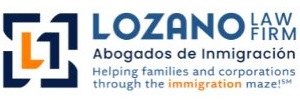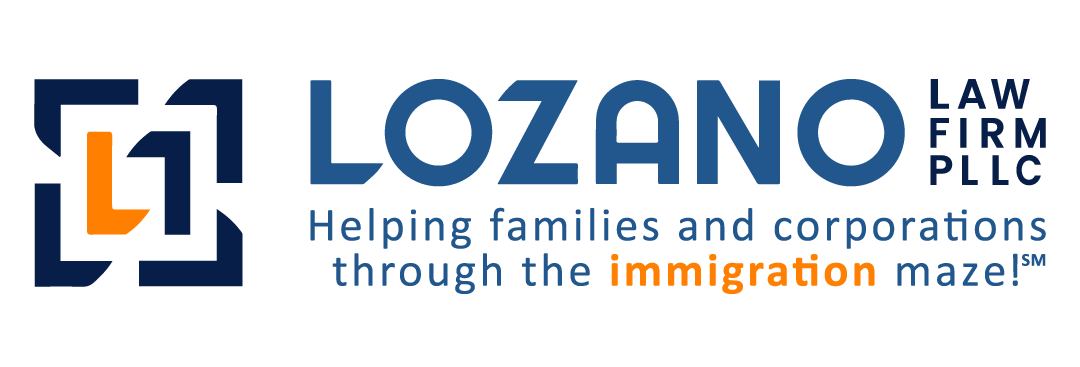The E-1 visa opens new doors for Mexican traders looking to enter the U.S. market. It’s for real businesses doing real trade. Success begins with knowing what type of trade can qualify. It provides the clarity and guidance you need to move forward confidently.
Understanding what trade qualifies—and how to prove it—is the foundation of a successful E-1 visa application. This article walks you through trade categories, legal requirements, and challenges. It also discusses how Lozano Law Firm supports clients every step of the way.
Background Of The E-1 Treaty Traders Visa
Understanding the E-1 visa helps Mexican traders determine if their business qualifies. This visa is for individuals engaged in continuous, income-generating trade between the United States and Mexico. It covers both owners and employees, and allows their families to join them in the United States.
What Is The E-1 Visa?
The E-1 Treaty Trader Visa is for nationals of treaty countries—Mexico is one of them. It allows those in substantial trade to live and work in the United States. Businesses must demonstrate that over 50% of their international trade is with the U.S., not just any country.
The trade must be consistent and must involve real exchange. Both goods and services qualify, but only if the trade has a clear structure. The business itself must be active, not just a paper operation. Business owners and essential employees are eligible under this category.
What Are The Benefits Of The E-1 Visa?
This visa offers flexible terms. It is initially valid for two years, and visa holders can renew it indefinitely as long as the trade continues. E-1 holders can live and work in the U.S. and bring their spouses and children with them. Spouses can apply for work authorization.
Families benefit from the stability this visa provides. Children can attend school, and the visa doesn’t limit future renewals. The E-1 is attractive to businesspeople who want to establish long-term commercial operations in the U.S. without needing to commit to permanent residency immediately.
The visa is for businesses actively trading with the U.S. However, to qualify, the type of trade must meet E-1 requirements.
Qualifying Trade Types For E-1 Visa
The types of trade that qualify under the E-1 visa must show a real exchange of value between Mexico and the U.S. These transactions include goods, services, and intellectual property. They must occur frequently, be well-documented, and represent an ongoing, sustainable business, not one-off or informal sales.
Trade In Goods
Goods are physical products moved between countries. Qualifying goods include textiles, auto parts, food products like avocados and citrus, electronics, and manufacturing materials. These shipments must be frequent, not just one large order. Trade must be ongoing and tied to a working business model.
Agricultural goods are a common E-1 trade route from Mexico to the U.S. Handcrafted items, furniture, and raw materials, such as silver or oil, also qualify for this route. What matters most is continuity. Immigration officers want to see an established trade flow, not test runs or sample exports.
Documentation should include customs filings, invoices, contracts, and shipping confirmations. Items must move legally and be tied to a business operation in Mexico. The E-1 visa isn’t for casual exporters. It’s for structured companies with reliable buyers or clients in the United States.
Trade In Services
Services are another strong option under the E-1 category. Qualifying services include IT support, financial consulting, legal, architecture, engineering, and marketing. If you have U.S. clients that you serve from Mexico, or by temporarily working in the U.S., this qualifies as trade under the visa rules.
To qualify, you must sell the service regularly and earn income. Your primary market should be the U.S. Use contracts, payment records, and communications to support this. A strong application clarifies that your business relies on U.S. clients, not just random consulting gigs.
Treat services like goods—document them. Show proof of deliverables, timelines, and billing cycles. Work only with U.S.-based clients and ensure your services deliver results. The more detailed your records are, the more solid your application will be.
Technology & Intellectual Property
Tech trade and licensing deals are eligible, too. They qualify if a Mexican company licenses software, franchises operations, or sells digital products to U.S. businesses. These transactions still count as trade, just in a modern, non-physical form. Consistency matters here as well.
The trade covers SaaS models, app distribution, digital platforms, and intellectual licensing. Payments count as trade when U.S. customers subscribe on a monthly or yearly basis. Back this up with contracts, financial records, and a business model that keeps your operations running smoothly.
You’re in good shape if your trade fits one of these categories and occurs frequently. But how much trade is enough? That’s up next.
Visa Criteria For A Qualifying Trade
Knowing the correct types of trade isn’t enough—you also need to show the trade is “substantial” and “principal.” It means volume, frequency, and U.S.-focused activity. Authorities look for patterns and proof that the U.S. is your primary trade partner. Look at those rules closely.
What Counts As Substantial Trade?
Substantial trade refers to the flow of transactions over time, rather than just the total dollars. USCIS considers how often deals occur, their value, and their importance to the business. A few big deals might not be enough. Frequent transactions, even small ones, carry more weight.
Each trade must involve an actual exchange of goods or services. The trade must support the business’s survival. Smaller but repeated transactions may show a better case for a small business than occasional large ones. It’s about consistency more than just size.
What Does Principal Trade Mean?
Principal trade means that over 50% of international trade must be with the U.S. This is a strict rule. If a business sells more to Canada or Europe, it may not qualify. This is why many applicants shift focus to the U.S. market before applying.
Proving this requires breaking down all international transactions. You must show that most contracts, invoices, and revenue involve U.S. clients. If Mexico-U.S. trade isn’t the majority, you’ll likely face issues during review, even if the trade volume seems high.
How To Document A Qualifying Trade?
You’ll need documents for everything. That includes invoices, contracts, bank deposits, shipping documents, and communications with U.S. customers. A complete file helps reviewers clearly understand your business. The easier it is to verify, the stronger your chance of approval.
Understanding the numbers and having clean records helps a lot. But sometimes, businesses still face trouble during the process. Walk through the common roadblocks and learn how to solve them.
Challenges & How To Overcome Them
Even the strongest businesses face issues in the E-1 visa process. Problems include missing records, low transaction frequency, and trades primarily occurring outside the U.S. Fixes often involve better documentation and realigning the trade focus toward U.S. markets.
Documentation Problems
Many cases fall apart because the documents are weak or incomplete. It raises red flags if you don’t back your trade with invoices, payment records, or contracts. Your business might operate honestly, but without proof, it won’t pass. What matters most are clean, consistent records.
Fix this by organizing your documents in order. Match each invoice with its payment and shipping log. Skip the screenshots and loose emails. Build a case solid enough to hold up in a government audit—immigration officers check every claim.
Trade Volume Issues
Some applicants rely on a few big clients. But when transactions are too far apart, they can’t meet the frequency rule. Officers look for steady business activity, not seasonal bursts or random deals. Trading must happen regularly, no matter the value.
Shifting focus to smaller but frequent transactions may help. Some businesses adjust pricing or expand outreach to U.S. clients before applying. It makes sense and strengthens your numbers. A consistent monthly flow is better than two deals yearly, even at a higher value.
Failing The Principal Trade Rule
You must restructure or reassign clients if more than 50% of your trade involves non-U.S. markets. It can take time. A good legal strategy is to wait until new deals with U.S. companies take effect before submitting your application.
Fixing these problems is possible, but easier with help. Look at how Lozano Law Firm supports Mexican traders every step of the way.
Lozano Law Firm, Your Immigration Partner
At Lozano Law Firm, we work closely with Mexican business owners to ensure every E-1 case is solid. Our bilingual team helps with forms, proof, and interviews. We guide you every step of the way, from your first question to your final approval. You will not feel lost.
Clients appreciate our honesty, speed, and personal care. Whether you’re just starting or expanding operations, we’re here to help. We assist with gathering the proper documents, fixing weak areas, and building a complete legal case that meets the E-1 requirements.
We understand the needs of cross-border businesses and know what U.S. immigration officers expect. From franchise deals to export companies, we’ve helped many achieve visa approval without stress or confusion. You focus on running your business—we’ll handle the legal side.
Securing an E-1 visa requires real trade, clear records, and a strong focus on U.S. business activity. Mexican entrepreneurs can benefit from its flexibility and long-term potential. Knowing what qualifies is the first step, and taking action is the next.
Lozano Law Firm makes that action easier. We help clients build winning applications with confidence. If you’re ready to bring your trade into the U.S. market, our team is ready to help.

 Thank you for contacting us. Please complete this form and one of our team members will be in touch with you soon.
Thank you for contacting us. Please complete this form and one of our team members will be in touch with you soon.
